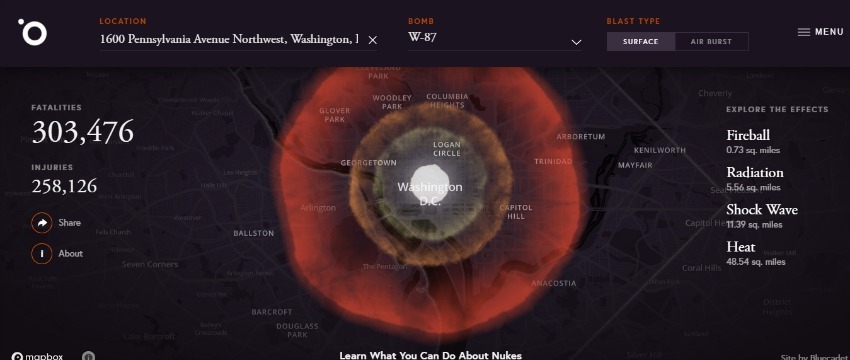
IPFS News Link • Weapons/Weaponry
This Nuclear Blast Simulator Lets You Put In ANY Address to See What Would Happen...
• The Oranic Prepper - Daisy LutherIn the event of a nuclear strike, there are four things to consider. The numbers below are in the event of a 300 kiloton bomb:
The Fireball: Everything in this range would be disintegrated, It is nearly a one-mile radius and also called Ground Zero.
Radiation: A wave of deadly radiation would affect everything within 5.5 miles. This will cause lung injuries, severe burns, deafness, blindness, and internal bleeding. Anyone in this range who survives the immediate danger is likely to suffer from radiation poisoning in the upcoming weeks.
The Shockwave: A shockwave of incredible power would spread throughout a range of about 11.5 miles. Also called the blast wave, this highly compressed air will travel at high velocities (up to 470 mph), destroying nearly every building in its path.
The Heat: Heat from a nuclear blast would travel almost 50 miles. This heat can ignite fires and cause first degree burns.
You can plug any address into this website and see how far the effects of a nuclear strike would reach.
This is a link to the Blast Simulator.
Here's what a 300 KT strike on the White House would look like, so that you can get an idea of the different danger zones.
You can check out my book, How to Survive a Dozen Disasters, for detailed information on how to prepare for the potential of a nearby nuclear strike and what to do if it happens. This article has some instructions as well.
Where are nuclear strikes most likely to take place?
It depends. There are all sorts of variables with regard to nuclear targets. While most of us would think that cities like New York, Washington DC, and Los Angeles would be more desirable because of high population density, the targets are more likely to be strategic militarily.






























